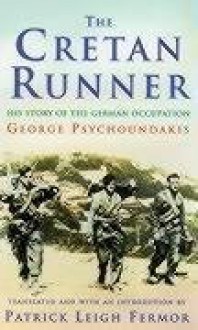
I am working my way through all of Patrick Leigh Fermor books and, whilst he is only the translator here (also adding a few helpful footnotes and an introduction) Crete feels an important part of his myth, as well as an interesting slice of WW2 history in its own right. Actually Patrick Leigh Fermor is really only a bit part player in this book, though he adds a few helpful footnotes in addition to translating the book into English.
This is a fascinating insight into an active member of the Cretan resistance during WW2. George Psychoundakis was a young shepherd boy when the Nazis invaded his home in 1941. Whilst clearly very bright and perceptive he was relatively uneducated. This does not hamper his descriptive powers and, bearing in mind his lack of education, this is a remarkable book.
As George Psychoundakis explains, Crete has a long history of occupation and counter-resistance, and he had no hesitation in participating in the resistance. He was a runner, carrying messages between different resistance groups and across diverse, usually mountainous terrain, barely resting for weeks. A risky and courageous existence, frequently achieved with very little food or sleep, in extreme conditions and all for no recompense. The conflict in Crete between the Cretan guerrillas, supported by a handful of British soldiers, and the Nazi occupiers was extreme. The hated Germans behaved barbarically to the Cretans and punished acts of insurrection by torturing and destroying entire communities. This book describes the backdrop to these years.
Prior to WW2, George had never left the island of Crete. For a short period during the war he left Crete and visited Egypt and Palestine. Viewing these new worlds through his eyes is a real pleasure and one of the many highlights in the book.
I found the huge array of different characters to be a little confusing however this did not hamper my enjoyment of this guileless account of a courageous and extraordinary resistance fighter.
4/5

 Log in with Facebook
Log in with Facebook 





